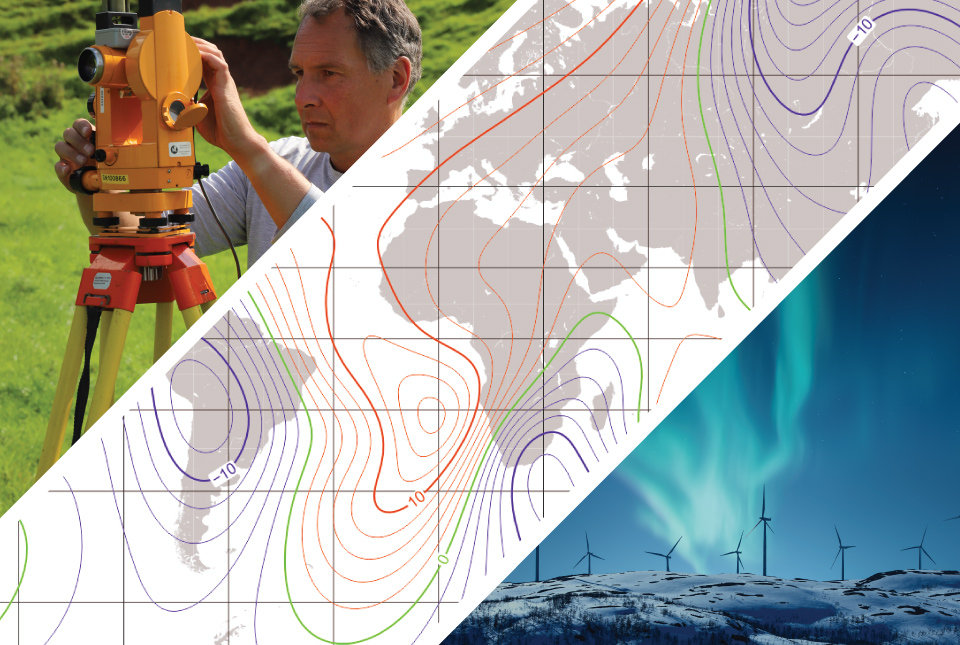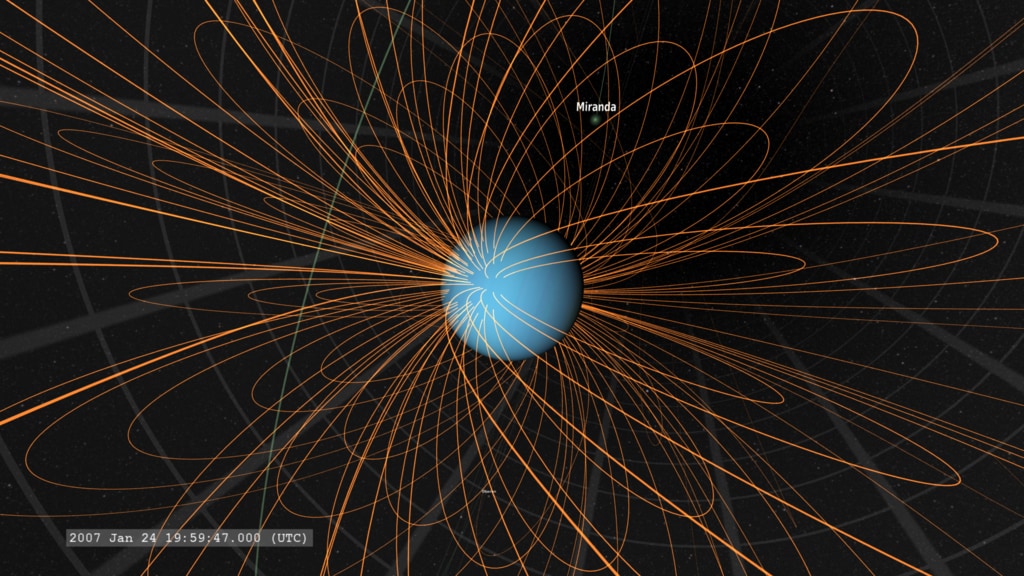Earth Sciences

Earth
Earth is the third planet from the Sun and the only astronomical body known to host life. A differentiated terrestrial world with active plate tectonics, abundant surface water, and a protective atmosphere and magnetosphere, it formed about 4.54 billion years ago. Its oceans cover roughly 71% of the surface, and the atmosphere is dominated by nitrogen and oxygen, with rising trace greenhouse gases shaping modern climate.

Geomagnetism
Geomagnetism is the branch of geophysics that investigates Earth’s magnetic field, its origins in the planet’s core, its spatial structure, and its variations over timescales from seconds to millions of years. The discipline spans internal field generation by the geodynamo, crustal magnetization, and external sources in the ionosphere and magnetosphere, with applications in navigation, resource exploration, and space-weather hazard mitigation.

Magnetosphere
A magnetosphere is the region of space around an astronomical body where its magnetic field dominates the motion of charged particles. Shaped by interaction with ambient plasma such as the solar wind, magnetospheres include distinct boundaries and current systems, regulate the entry of energy and particles, and play a central role in space weather and atmospheric evolution.

Oceanography
Oceanography is the interdisciplinary study of Earth’s global ocean, encompassing its physical dynamics, chemical composition, geological structures, and biological systems. The field integrates shipboard surveys, autonomous observing networks, satellite remote sensing, laboratory analyses, and numerical modeling to understand circulation, climate regulation, ecosystems, and the seafloor. Contemporary oceanography addresses issues such as ocean warming, sea-level rise, ocean acidification, deoxygenation, and mapping of the largely unexplored seabed.

Paleontology
Paleontology is the scientific study of ancient life through the examination of fossils, encompassing the evolution, interactions, and environments of organisms across Earth's history.

Petrichor
Petrichor is the term for the characteristic earthy aroma that arises when rain falls on dry soil. Coined in 1964 by Australian researchers Isabel Joy Bear and R. G. Thomas, the scent reflects a combination of plant-derived oils, microbial metabolites such as geosmin, and physical processes that aerosolize these compounds during light to moderate rainfall.

Volcanology
Volcanology is the scientific study of volcanoes, lava, magma, and related geological phenomena, encompassing their formation, eruption mechanisms, and impacts on the environment and human societies.